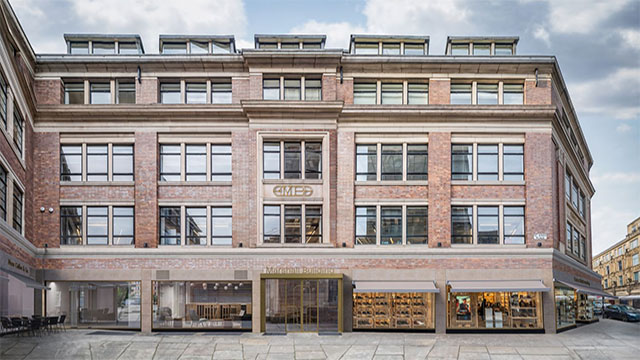Appellant appealing against enforcement notice issued by second respondents – First respondent dismissing appeal – Whether inspector erred in approach to question of whether structure falling within curtilage of listed building – Appeal allowed
The second respondents issued a listed building enforcement notice against the appellant, which identified the listed building as “the stable block lying within the curtilage of the Grade II listed Grimsdyke Hotel”. The notice specified the alleged contravention of section 9(1) of the Planning (Listed Buildings and Conservation Areas) Act 1990, by “the removal of the existing timber frame windows and the installation of white plastic double-glazed windows, without the benefit of listed building consent”. The appellant appealed against the notice, inter alia, on the ground that the stable block was not listed in its own right and fell outside the curtilage of the hotel. On 26 May 1998 the first respondent dismissed the appeal and adopted the appraisal of an inspector, who observed that the “structure is some distance from the principal building” and had a “seemingly remote siting”. The first respondent stated that “based on the physical, historical ownership and information… the stable block lies within the curtilage of Grimsdyke Hotel”. The appellant challenged the first respondent’s decision pursuant to section 65 of the 1990 Act, on the ground that the inspector erred in law in his approach to the question of whether the stable block was within the curtilage of the hotel. It was submitted by the appellant that the inspector had not had regard to the principle that the curtilage of the listed building was confined to a small area about the building, as established by the case law: see Dyer v Dorset County Council [1989] 1 QB 346. It was further submitted that the advice in PPG 15 failed to mention that principle. Therefore, the inspector had failed to take account of a material consideration
Held: The appeal was allowed.
The force of Dyer (supra) was so clear that it would amount to an error of law to determine whether a structure, separated by some distance from the listed building, was within the curtilage of that building, without having some regard to the concept of curtilage as a small area about the building. Considerations of function, history, ownership and physical layout were all material and may, in most cases, be determinative of the question. However, unless the decision-maker also had in mind the essential concept of size, in cases of substantial separation, he may reach the wrong conclusion. What was small varied greatly, according to the circumstances, and to say that a curtilage was a small area was clearly not to provide any precise test of identification. However, the concept of size would prevent the decision-maker from extending too far the area he defined as the curtilage. The inspector did not have regard to the idea of curtilage as a small area about a building. His conclusion may have been different had he approached the matter correctly.
Christopher Katkowski (instructed by Actons, of Nottingham) appeared for the appellant; John Hobson (instructed by the Treasury Solicitor) appeared for the first respondent; the second respondents, Harrow London Borough Council, did not appear and were not represented.
Sarah Addenbrooke, barrister









